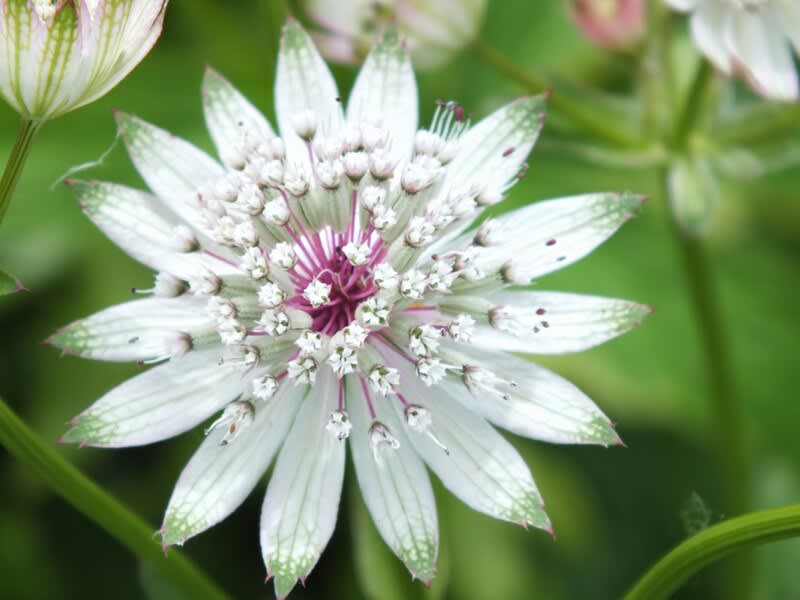Great Masterwort, Hattie's pincushion, Melancholy Gentleman
Astrantia major

🌿 Morphology
🌞 Growing conditions
🌍 Origin and family
🌾 Uses
Warning: Despite the care taken in writing this sheet, it is essential to cross-reference sources before using or consuming any plant. When in doubt, consult a qualified professional
Permaculture uses
Astrantia major is primarily an ornamental plant, attracting pollinators like bees and butterflies to the garden. The flowers can be used in cut flower arrangements, fresh or dried. While not commonly consumed, some sources mention the leaves being edible when young, but this should be approached with extreme caution due to potential toxicity. No known medicinal uses.
Permapeople description
Astrantia major is a herbaceous perennial plant in the family Apiaceae, native to central and eastern Europe. It is cultivated as an ornamental plant, valued for its attractive flower heads.
Botanical description
Astrantia major is a herbaceous perennial plant belonging to the Apiaceae family. It typically grows to a height of 2-3 feet. The plant features palmate basal leaves with serrated edges. The flowers are arranged in a dome-shaped umbel surrounded by prominent bracts. The bracts are often white, pink, or reddish in color, giving the flower head an attractive star-like appearance. Flowering occurs in summer. It prefers moist, well-drained soil and partial shade. Several cultivars exist with varying bract colors, such as 'Roma' (pink), 'Rubra' (red), and 'Alba' (white).
Companion planting
Astrantia generally companions well with other shade-loving perennials. It complements plants with contrasting foliage textures and colors. Avoid planting near aggressive spreaders that may outcompete it.
Propagation methods
Astrantia major can be propagated by seed, division, or basal cuttings. Seed germination can be slow and erratic. Division is best done in spring or autumn. Basal cuttings can be taken in spring.
History and traditions
Historically, Astrantia has been associated with melancholy and thoughtfulness. The common name 'Melancholy Gentleman' reflects this association. It was sometimes used in cottage gardens and is now increasingly popular in contemporary gardens. There is no widespread record of significant historical medicinal or culinary use.
Usage calendar
Flowering: June to August. Sowing: Spring or Autumn. Division: Spring or Autumn. Planting: Spring or Autumn. Pruning: After flowering to encourage further blooms.
